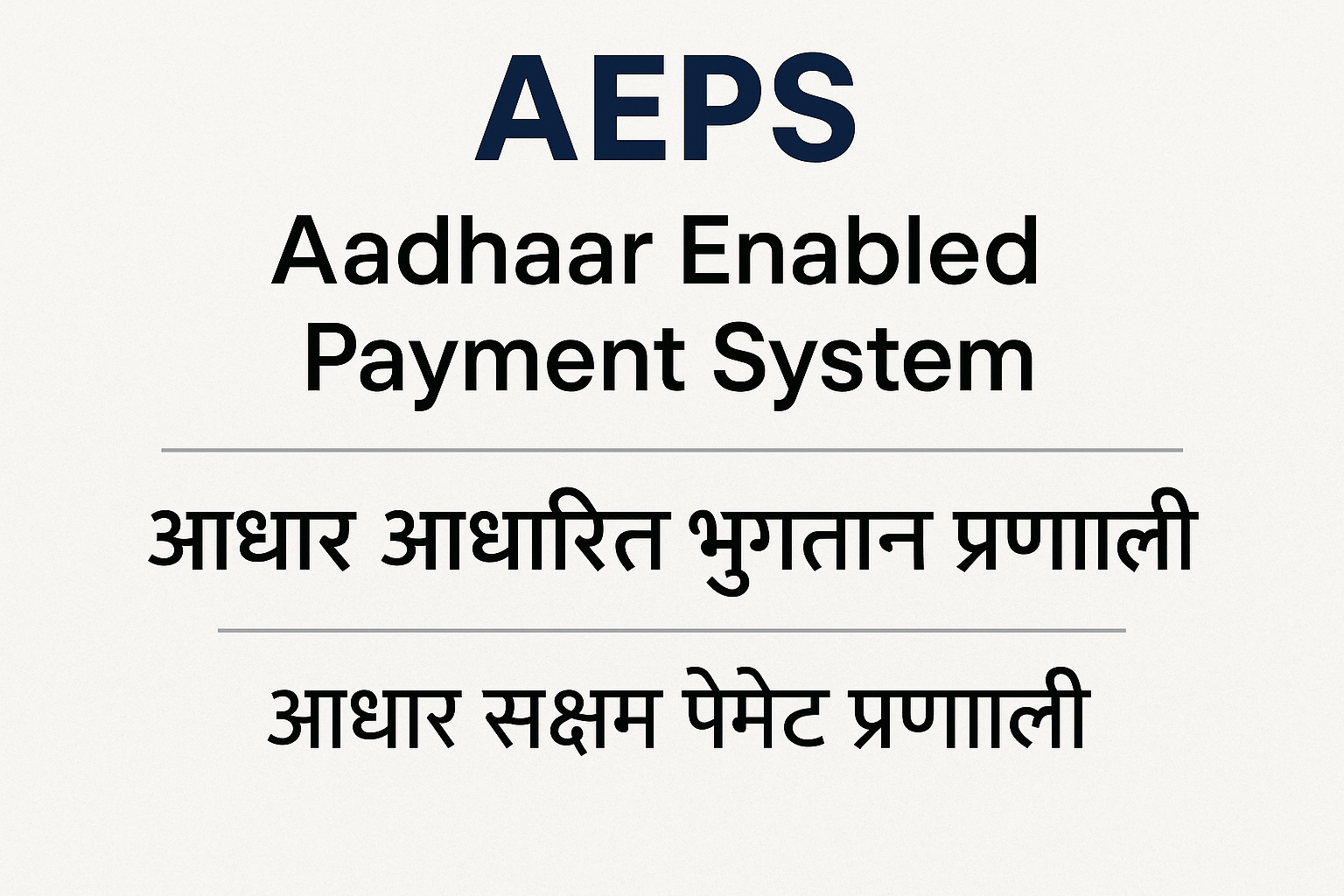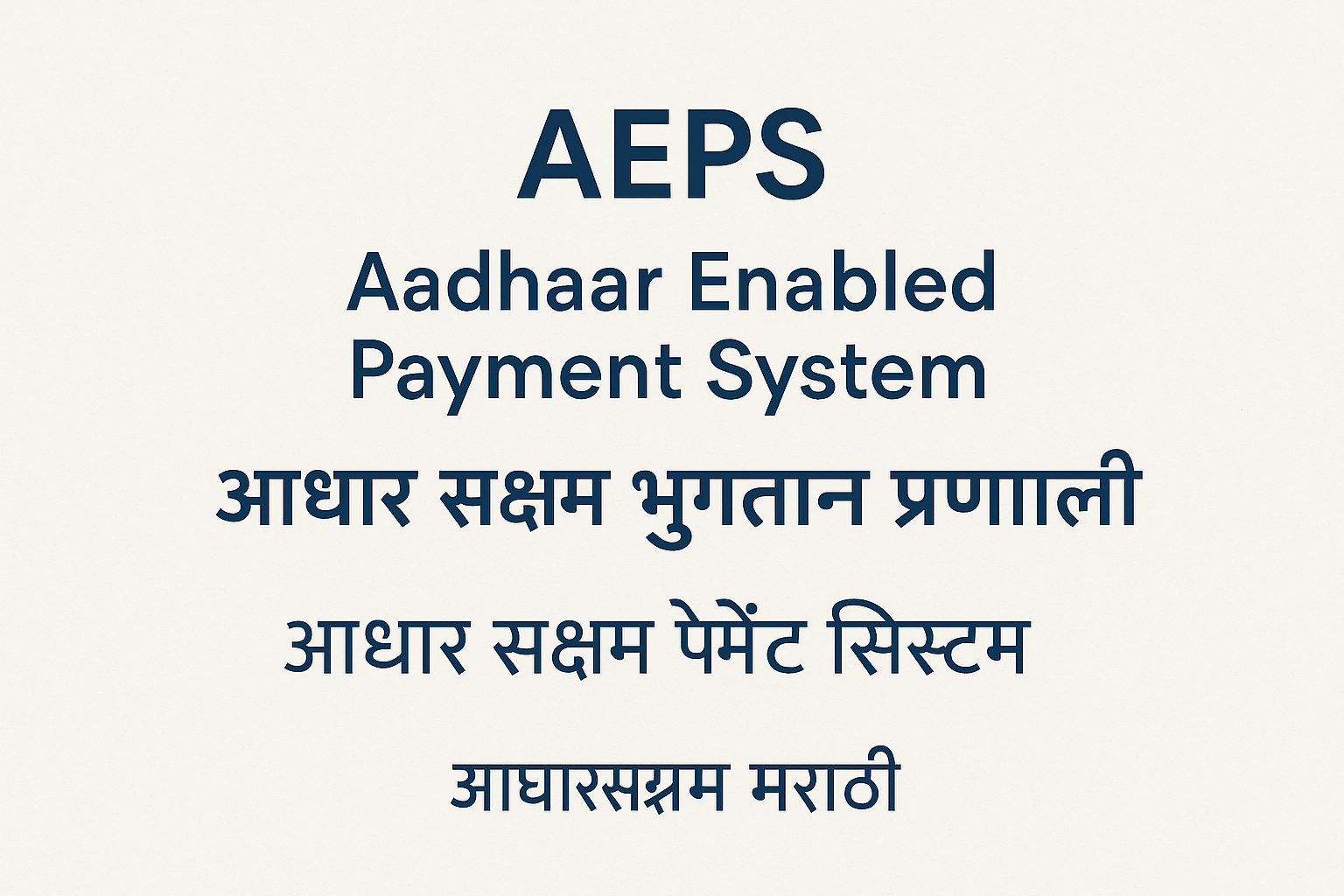In an era where digital transactions are becoming the norm, India has pioneered a (AEPS Full Form) revolutionary financial system that empowers every citizen with a bank account. This system is known by its acronym, AEPS. But what exactly is the AEPS full form, and how does it transform the way we bank? This comprehensive guide will demystify the Aadhaar Enabled Payment System in three languages—English, Hindi, and Marathi—and explore its profound impact on financial inclusion in India.
What is the AEPS Full Form?
Let’s start by breaking down the acronym itself.
-
In English: AEPS stands for Aadhaar Enabled Payment System.
-
In Hindi: एईपीएस का फुल फॉर्म आधार सक्षम भुगतान प्रणाली (Aadhaar Sakshem Bhagtiyan Pranali) है।
-
In Marathi: एईपीएस चे पूर्ण रूप आधार सक्षम देयका प्रणाली (Aadhaar Sakshem Deyaka Pranali) आहे.
At its core, the AEPS is a bank-led model that allows online financial transactions at Point-of-Sale (PoS) or MicroATM devices through a Business Correspondent (BC), known as a “Bank Mitra,” using just your Aadhaar number and biometric authentication.
Who Developed the AEPS?
The AEPS is a flagship product of the National Payments Corporation of India (NPCI), the same organization behind hugely successful systems like UPI (Unified Payments Interface). It was launched to support the government’s vision of a less-cash economy and to promote financial inclusion.

How Does the AEPS Work? The Magic of Biometrics
The beauty of the AEPS lies in its simplicity and security. You don’t need a physical card, a smartphone, or to remember complex PINs. The system works on the principle of unique biometric identification.
Here’s a step-by-step breakdown of a typical AEPS transaction:
-
Visit a BC Outlet: You go to an authorized Banking Correspondent (a local shopkeeper or agent acting as a “micro-ATM”).
-
Provide Your Aadhaar Number: You provide your 12-digit Aadhaar number to the agent.
-
Select Bank and Transaction Type: The agent selects your bank name and the type of transaction you wish to perform (e.g., cash withdrawal).
-
Biometric Authentication: You place your finger on a biometric scanner (fingerprint device) connected to the agent’s machine. This scan is matched in real-time against the data stored in the UIDAI database.
-
Transaction Approval: Once your identity is verified, the transaction is processed. For a withdrawal, the agent hands you the cash. You receive an SMS confirmation on your registered mobile number.
This entire process is seamless, secure, and completed in a matter of minutes.
Key Services Offered by AEPS (आधार सक्षम भुगतान प्रणाली)
The Aadhaar Enabled Payment System is not just for withdrawing cash. It offers a suite of basic banking services:
-
Cash Withdrawal: Withdraw money from your linked bank account using your Aadhaar and fingerprint.
-
Cash Deposit: Deposit cash directly into your Aadhaar-linked bank account.
-
Balance Enquiry: Instantly check your bank account balance.
-
Mini Statement: Receive a mini bank statement of your recent transactions.
-
Aadhaar to Aadhaar Fund Transfer: Transfer money from your account to another person’s account using their Aadhaar number. (This service depends on bank support).
-
BHIM Aadhaar Pay: For merchants, this allows them to receive payments from customers using just their Aadhaar number and biometrics.

The profound Benefits and Impact of AEPS
The introduction of the AEPS has been a game-changer for India’s economy, particularly for the rural and unbanked populations.
-
Financial Inclusion: It has brought millions of Indians living in remote areas into the formal banking fold. As per a 2021 report by the Ministry of Finance, over 130 crore Aadhaar numbers have been issued, and a vast majority of bank accounts are Aadhaar-linked, enabling AEPS access.
-
Interoperability: You can use any bank’s BC outlet to access your account, provided your bank is part of the AEPS network. You are not limited to your own bank’s ATM.
-
Security: Biometric authentication (fingerprint/iris) is extremely difficult to forge, making transactions more secure than using a card and PIN that can be stolen or skimmed.
-
Ease of Use: It eliminates the need for physical documents, remembering passwords, or carrying a debit card. Your identity is literally at your fingertips.
-
Cost-Effective: It reduces the cost of banking operations for financial institutions by minimizing the need for setting up expensive brick-and-mortar branches in every village.
Potential Limitations and Challenges
While powerful, the system isn’t without its challenges:
-
Biometric Failures: Sometimes, biometric authentication can fail due to poor fingerprint quality (common among laborers, the elderly, or in humid conditions).
-
Connectivity Issues: Remote areas often suffer from poor internet connectivity, which can disrupt transactions.
-
Agent Availability: The success of a transaction depends on the reliability and availability of the Business Correspondent agent in a village.
The Future of AEPS
The AEPS framework is the bedrock for many future innovations. With the increasing penetration of internet and biometric devices, its use cases are expanding into areas like health records, pension disbursement, and Direct Benefit Transfer (DBT) under schemes like PM-KISAN, ensuring subsidies reach the intended beneficiary directly, reducing leakage and corruption.
Conclusion: More Than Just an Acronym
Understanding the AEPS full form is the first step to appreciating a silent revolution in Indian banking. The Aadhaar Enabled Payment System (आधार सक्षम भुगतान प्रणाली / आधार सक्षम देयका प्रणाली) is not just a piece of technology; it is a tool of empowerment. It has democratized access to financial services, ensuring that every Indian citizen, regardless of their location or literacy level, can participate in the economy securely and with dignity. It truly embodies the idea of “Financial Power in Your Hands.”
Frequently Asked Questions (FAQs)
1. Is it mandatory to link my bank account with Aadhaar to use AEPS?
Yes, your bank account must be linked with your Aadhaar number to perform any transaction using the AEPS platform. You can link them by visiting your bank branch or often through your bank’s net banking portal.
2. Are there any charges for using AEPS services?
The NPCI has mandated that basic AEPS transactions (like cash withdrawal, deposit, and balance enquiry) are free for customers. However, some banks or BC agents might impose a nominal charge, but it is usually lower than traditional ATM charges.
3. What should I do if my fingerprint is not being recognized?
You can try another finger. If the problem persists, you must update your biometrics at the nearest Aadhaar Enrolment Centre. You can also use your Aadhaar number and iris scan if the device supports it.
4. Can I use AEPS if I have accounts in multiple banks?
Yes, you can. However, you must specify which bank account you want to transact from at the time of initiating the transaction at the BC outlet.
5. Is AEPS safe?
Yes, it is considered very safe. Since it uses your unique biometric data for authentication, it is much harder to misuse compared to a card and PIN. However, you should only use authorized BC outlets and be cautious about sharing your Aadhaar number unnecessarily.
Disclaimer: This article is for educational and informational purposes only. The information contained herein is based on publicly available data and is intended to provide a general understanding of the topic. While we strive to provide accurate and up-to-date information, we make no representations or warranties of any kind, express or implied, about the completeness, accuracy, reliability, suitability, or availability of the information contained in this article. Any reliance you place on such information is therefore strictly at your own risk. For any specific queries or issues related to AEPS, please contact your bank or the National Payments Corporation of India (NPCI) directly.
If you have any concerns regarding the content of this post, including issues related to ownership or copyright (DMCA), please refer to our DMCA policy page [link to your DMCA page] for guidance on reporting and content removal.
